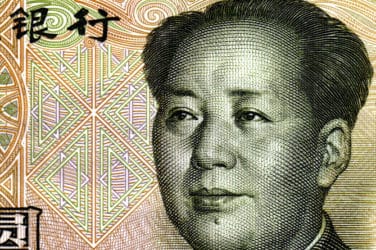
The systematic internaliser regime introduced in the European Union this year has not made it easier to trade cash bonds, has not increased competition or improved liquidity according to a survey by the International Capital Market Association.
The ICMA Quarterly Report Fourth Quarter 2018 included a Q&A on how the SI regime is working since MiFID II went live in the European Union at the the start of this year. MiFID II banned broker crossing networks and required firms to set up systematic internalisers to provide risk capital that facilitates trades. SIs have extra obligations such as trade reporting.
The trade association asked its membership eight questions and aggregated views from the sell side and buy side.
The lastest @icmagroup Quarterly Report is now available on our website. This Quarterly Report is produced by the Market Practice and Regulatory Policy team at ICMA and reviews the recent developments affecting the capital market. Read more here https://t.co/hNA58sPDXo
— ICMA (@ICMAgroup) October 11, 2018
ICMA said the SI regime aimed to increase transparency in the bond market on a quote-by-quote basis and measure over-the-counter trading to ensure that the internalisation of order flow does not undermine price formation on trading venues.
In the survey both the sell and buy side said trades are being executed on the back of SI quotes but there is no difference in quotes since MiFID II went live.
The aggregate sell side response in the ICMA report said: “There is no difference between SI quotes and axes. They are adding nothing to existing transparency mechanisms.”
The sell side also said price discovery through SI transparency has only barely met the objective due to very low liquidity thresholds. Asset managers continued that they have not found additional liquidity as price discovery is relatively easy in liquid markets but remains challenging in illiquid markets.
“There is more electronic trading (or processing trades electronically) which ‘one day’ may provide the buy side with useful data for more informed execution pre-trade; but liquidity has definitely not been created by the SI regime,” added the buy side members.
ICMA asked whether one of the main objectives of MiFID II – to create a more level playing field between trading venues, market makers and other liquidity providers – was being met.
A sell side member responded that the opposite has happened as the SI regime has made some smaller players re-consider their business due to its implementation costs. Another said that it is important to contrast the lack of a level playing field within the European Economic Area with other jurisdictions.
“The US, Asia and some other financial sectors in the rest of the world, are currently experiencing a more level playing field,” added the report. “Looking at this with an even wider (extra-territorial) lens, EEA firms are finding that there is also not a level playing field between non-EEA branches of EEA investment firms and non- EEA investment firms, e.g. an Asian branch of an EEA investment firm versus local Asian bank.”
The buy side answered that there is a high likelihood that the EEA playing field will never be level while national authorities have different opinions/rules on reporting.
The final question was whether there are any benefits from the SI regime, besides post-trade reporting. Both the sell and buy side said no.
“Most broker-dealers opted-in as an SI in order to facilitate their clients reporting obligations for products where reporting was necessary,” added the report.
Equities
Steven Maijoor, chair of the European Securities and Markets Authority, commented on the SI regime in a speech this month. He noted that systematic internalisers appear to be enjoying a significant increase in market share.
Keynote speech by ESMA Chair, Steven Maijoor, @TheWFE General Assembly is now available. #gaam2018
?️The state of implementation of MIFID II and preparing for Brexit.
Full text ?▶️https://t.co/CM6dvdQ943
?️?Some sections on #EMIR #Brexit and #MiFIDII pic.twitter.com/pxcbmnefbf
— ESMA (@ESMAComms) October 3, 2018
In equities there have been concerns that SIs have unfair advantages over trading venues and this will result in changes in the market structure away from lit venues. For example, in the original MiFID II text said SIs were not subject to the tick size regime applicable to trading venues in the EU for equity instruments, allowing them to offer marginally better prices than trading venues.
“Esma, as an early corrective measure, in March this year submitted a proposal to the Commission to ensure that quotes of systematic internalisers which are subject to pre-trade transparency meet the tick size requirements,” added Maijoor. “The Commission is now in the process of endorsing this proposal, albeit for a slightly narrower scope of instruments, thereby further aligning the regulatory requirements applicable to SIs and trading venues. We are hoping that this necessary amendment will make it into law very soon.”





